World cruelly mocks Aussie after Paris breaking flop: ‘Doesn’t have a chance’
The Olympics debuted a new sport today and Australia’s entrant became the laughing stock of the world after a brutal debut.

The chances of breaking ever being taken seriously by Australian sport fans might have just been pulverised in Paris.
Aussie B-girl Raygun, real name Rachael Gunn, was our representative as the sport debuted on the Olympic stage overnight Friday.
And from the audience’s first glimpse, you had to wonder what the hell we were thinking.
It’s obviously harsh, but if the aim of the game was to connect with a younger audience why did Raygun look like she’d taken a wrong turn on her way to sit in the outer at a one-day international cricket game.
In a field where the other competitors looked young and fresh, we were the daggy mum. And yes, she did the sprinkler.
It wasn’t hard to predict how social media was going to react.
“Never watched breaking before but I can already tell Raygun doesn’t have a chance in this event,” one wrote.
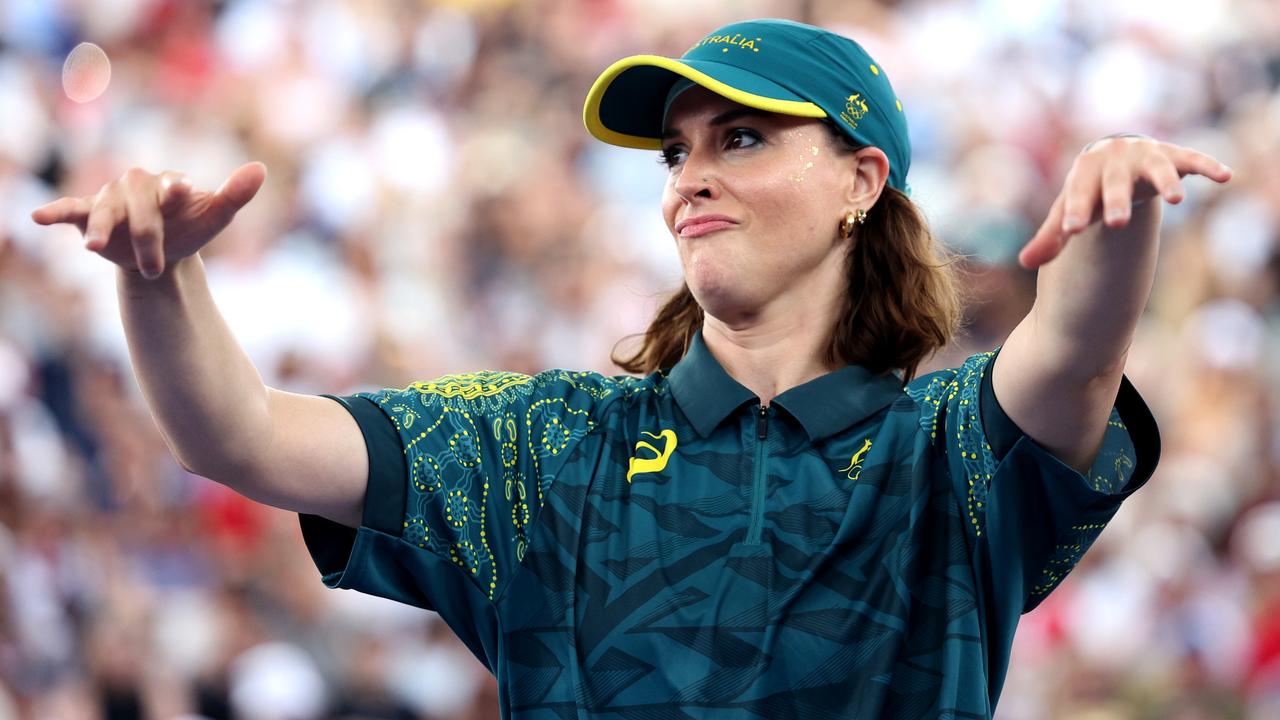
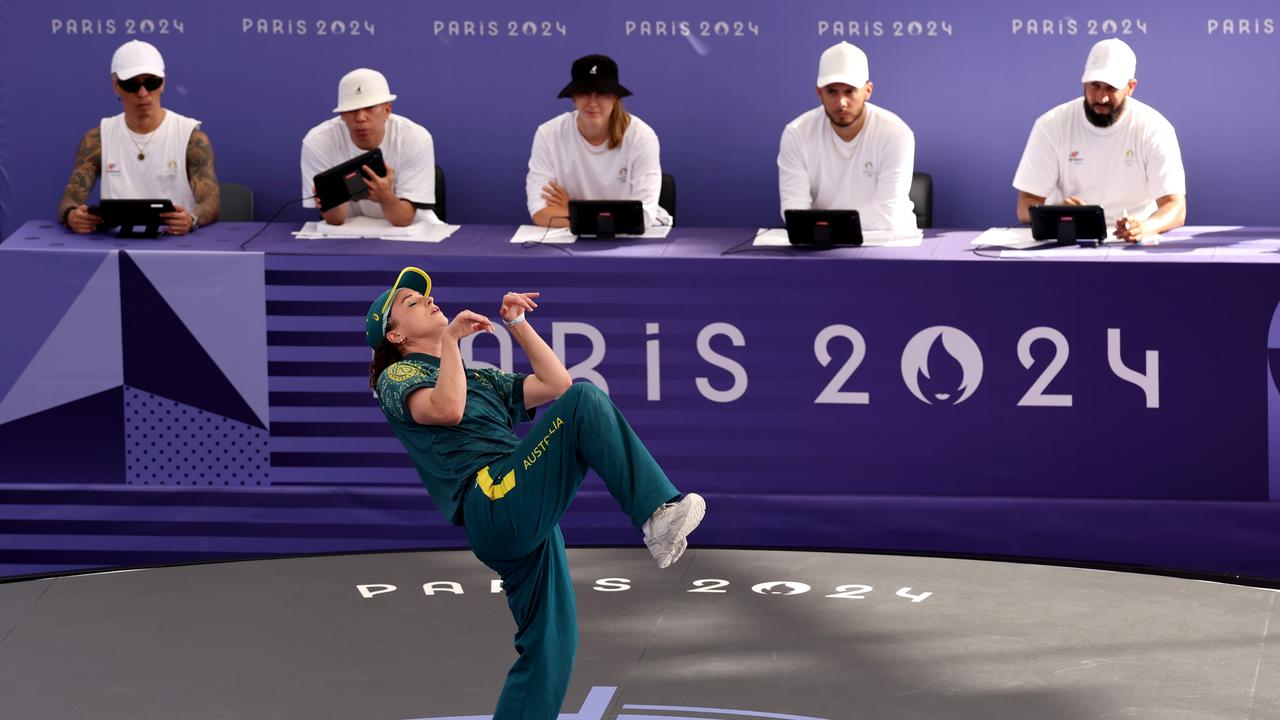
“Props to Raygun for having the guts to go out there … but this was the most second hand embarrassment I’ve ever felt,” added another.
“Nah someone’s Mum called themselves Raygun and is doing breakdancing at the Olympics,” wrote a third.
“The Aussie B-girl Raygun dressed as a school PE teacher complete with cap while everyone else is dressed in funky breaking outfits has sent me,” added another. “It looks like she’s giving her (opponent) detention for inappropriate dress at school.”
“I could live all my life and never come up with anything as funny as Raygun, the 36-year-old Australian Olympic breakdancer,” someone else said.
The judges agreed, failing to award her a single round in her three appearances.
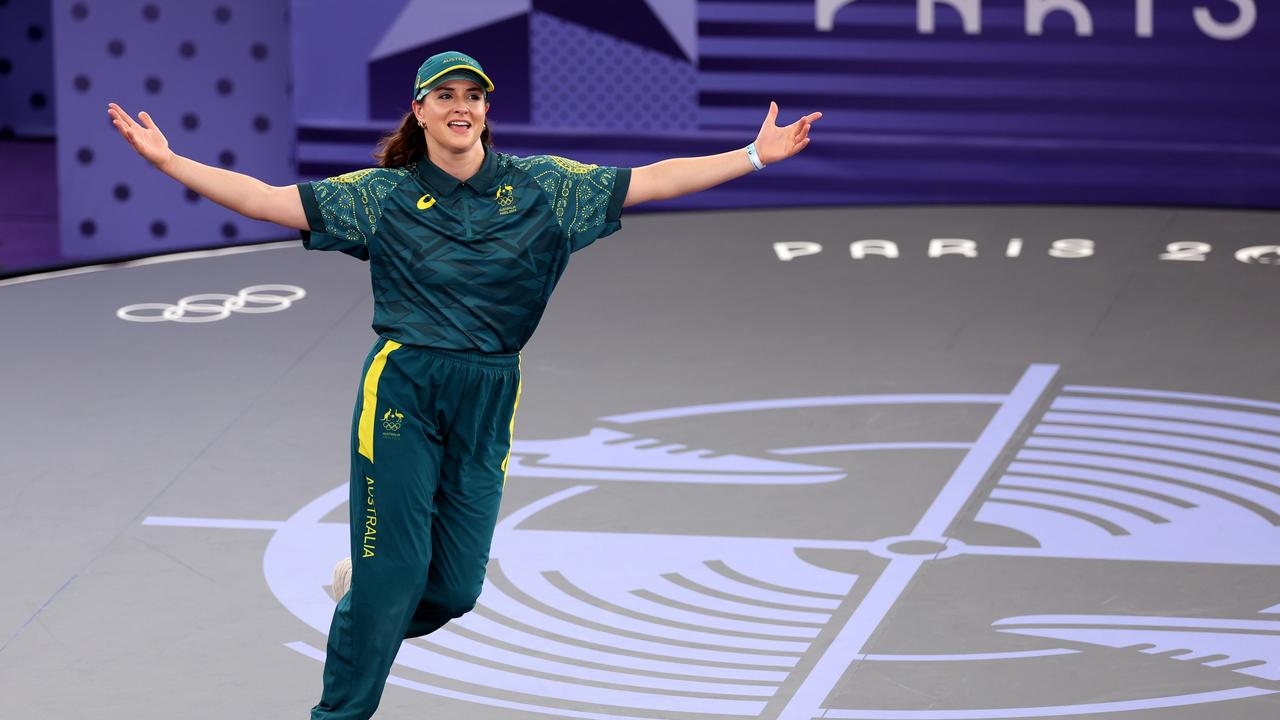
When Gunn walked out for her first battle of the day the MC yelled out to the crowd, saying “Australia in the house”.
It was the high point of the nation’s day.
Gunn, the Oceania continental champion, also won plenty of new fans with her self-deprecating style, but the judges - and most of the world - saw it differently.
She was a lamb to the slaughter when taking on world champ and No. 2 ranked breaker “Nicka” from Lithuania.
Gunn was all smiles throughout the whole spectacle, and the internet pile-on won’t take the smile off her face.
“I am super excited to be part of bringing breaking to the world,” she said.
“It is such a phenomenal atmosphere here. It is such an amazing experience, and it is a privilege to get this opportunity.”
She also explained the motivation behind some of her clunkier moves.
“All my moves are original,” she said.
“Creativity is really important to me. I go out there and I show my artistry.
“Sometimes it speaks to the judges, and sometimes it doesn’t. I do my thing, and it represents art. That is what it is about.”
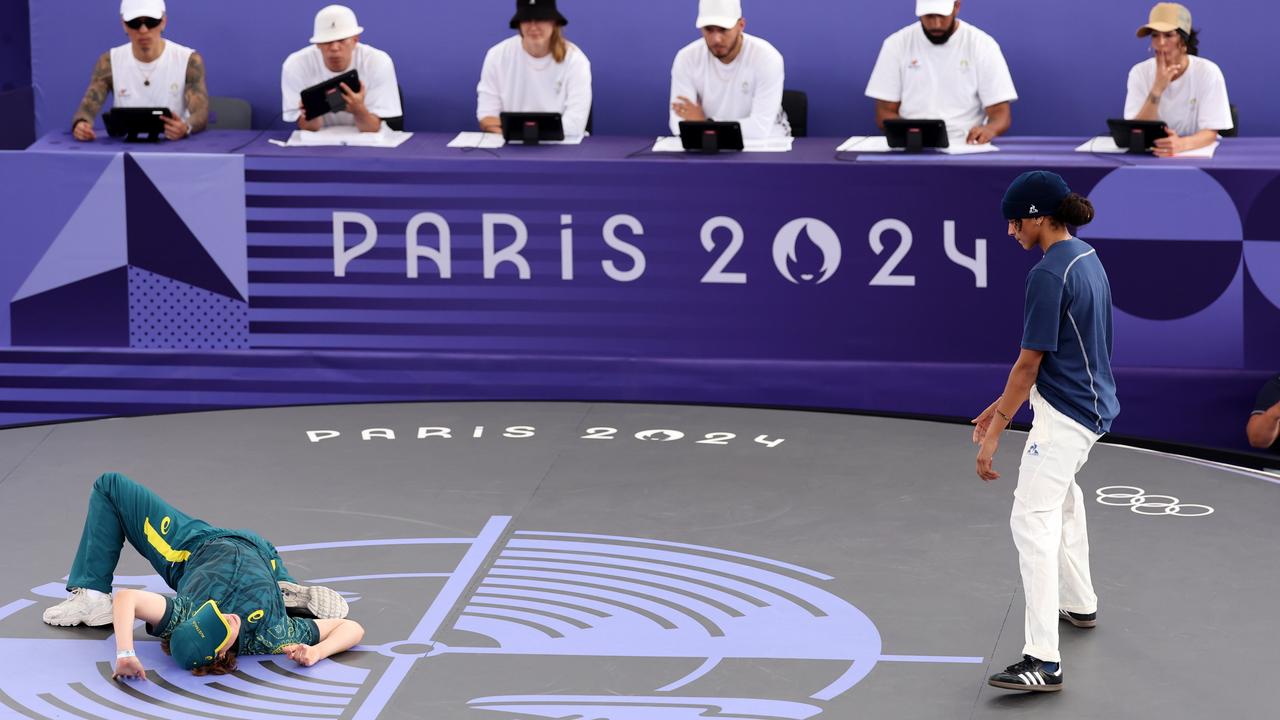
The Olympics is taking one if its biggest gambles with the introduction of breaking as an official sport.
The International Olympics Committee (IOC) and Paris officials have made no secret of their attempt to connect with a younger audience with the introduction of sports that have the potential to cut through on social media platforms. Sadly, equestrian dressage and sailing aren’t quite in that category.
In recent Games, surfing, skateboarding and sport climbing have been introduced, but breaking is the Olympics’ biggest experiment yet.
The sport’s inclusion has been highly controversial and it will not return for the 2028 Games in Los Angeles - much to the disappointment of Raygun.
“It was disappointing it was decided that it wouldn’t be in LA, particularly before we even had a chance to show it,” she said. “That was possibly a little premature. I wonder if they’re kicking themselves now.”
“What is an Olympic sport? What are the similarities between dressage and artistic swimming and the 100m sprint and the pentathlon?” she added.
“Breaking is clearly athletic, it clearly requires a whole level of dedication across a number of different aspects. It’s really bringing a new level of excitement.”
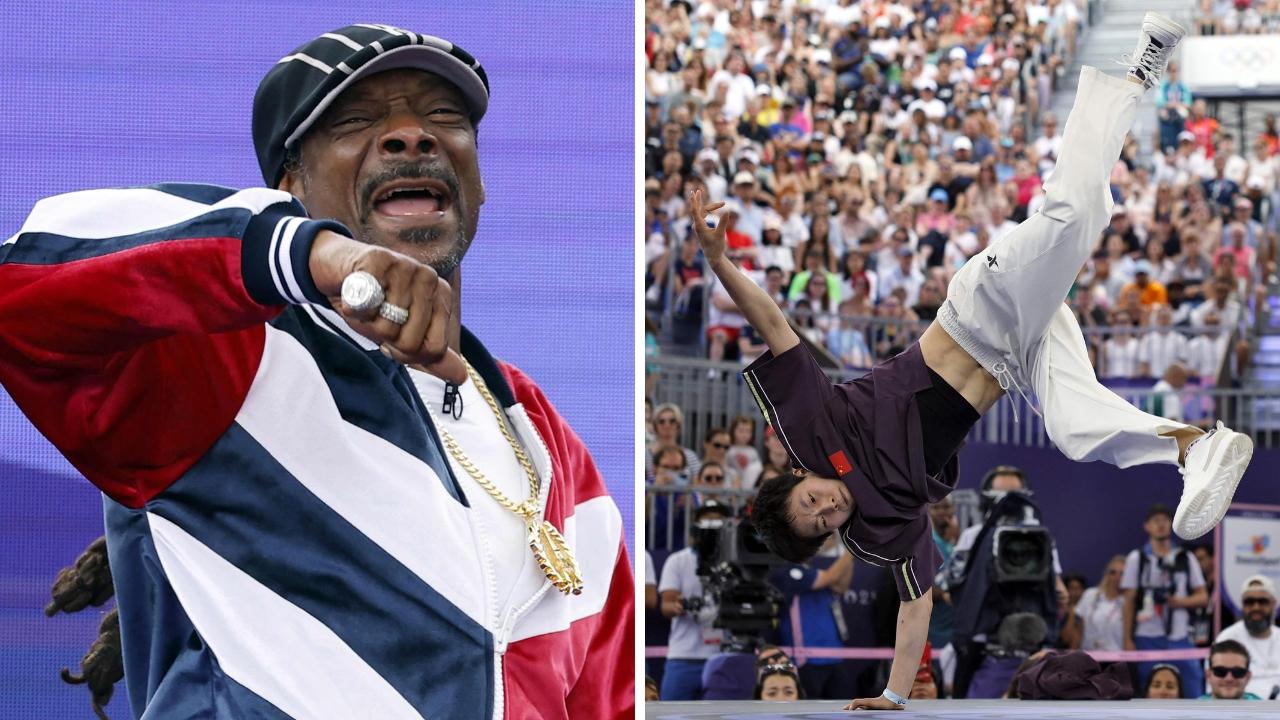
The Paris Games includes one men’s - which takes place tomorrow - and one women’s event “where 16 B-boys and 16 B-girls will go face-to-face in solo battles”. Yes you read that correctly.
After watching the throwdown for five minutes at the Paris Place De La Concorde Urban Park it was hard not to catch the buzz of the bouncing crowd and thumping tracks.
American rapper Snoop Dogg’s introduction of the event could easily have been a lame, token gesture, but the hip hop icon’s swagger, cheering and approval all seemed legitimate - just as the standing ovations the crowd gave the athletes ripping up the floor looked.
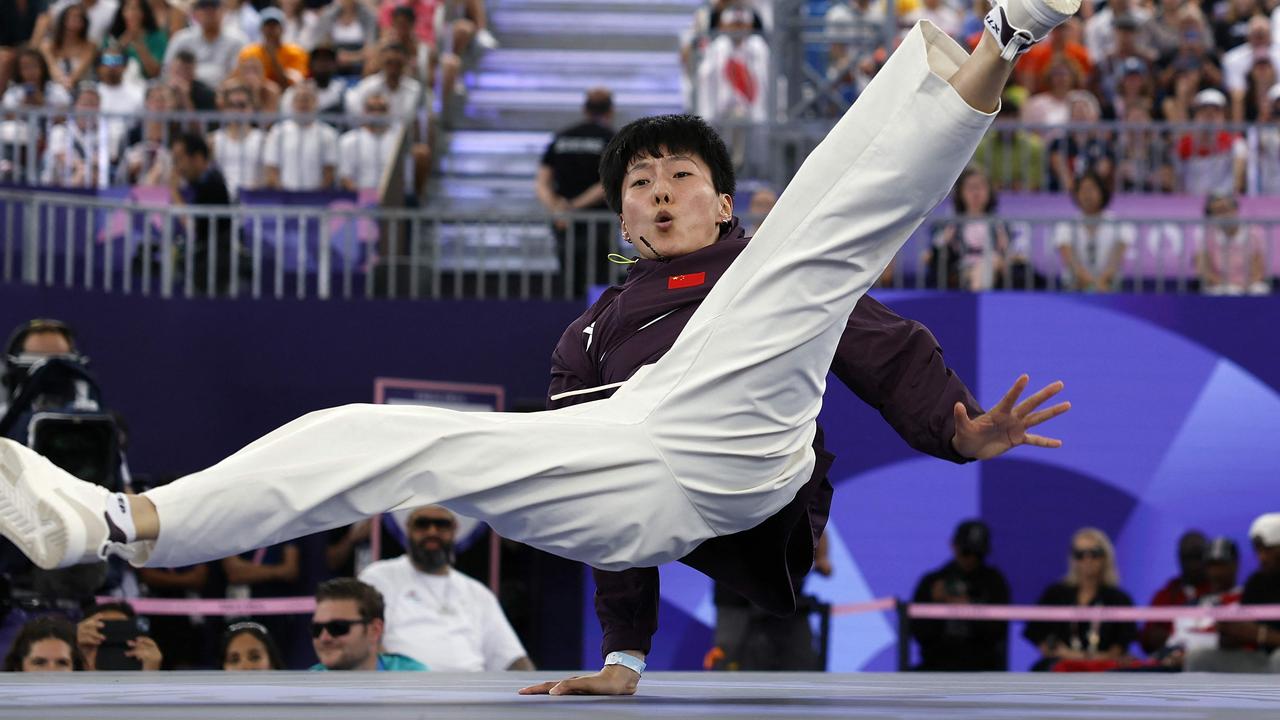
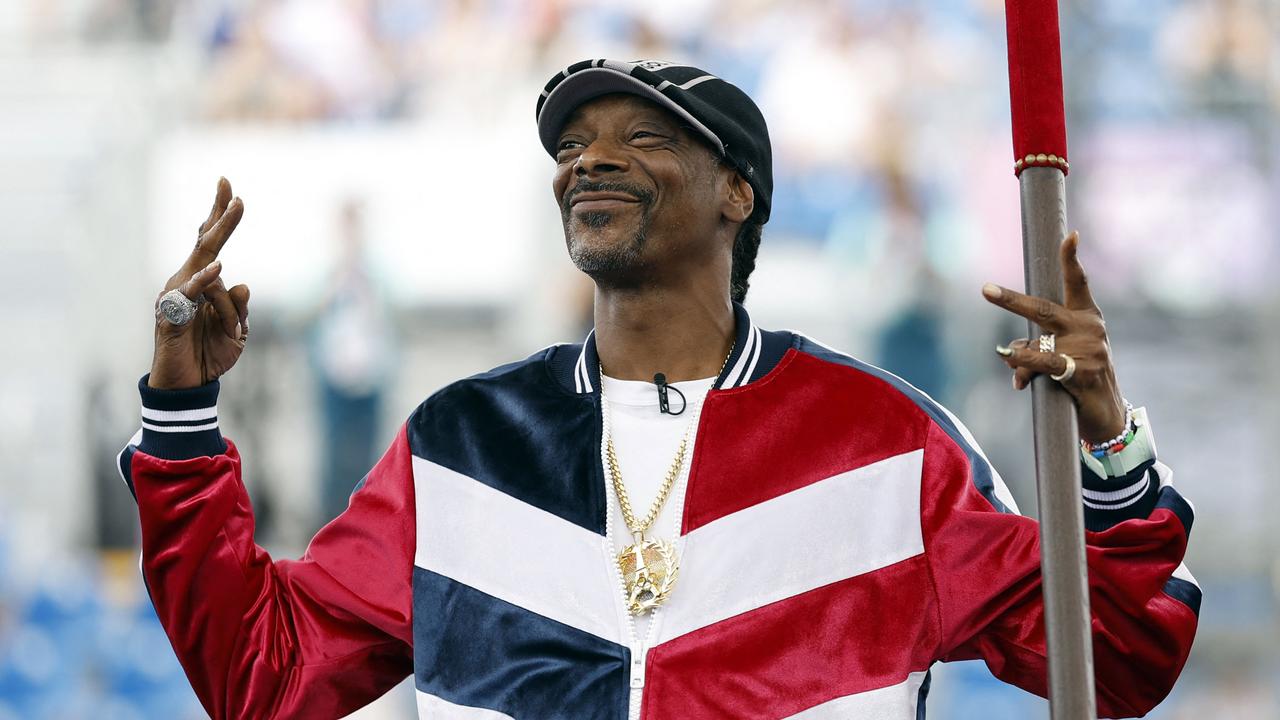
That’s what made it so hard to watch Australia’s representative. Almost everyone else seemed cool but Raygun looked like she was going for a weekend roll on the greens at the local RSL club.
The announcers, MC’s and DJs got the crowd rocking - here’s a taste of some of the language getting spat out from those on the microphone.
“So many beautiful people in this building, this is crazy,” one said to a roar from the crowd.
Another said after the first “battle”: “Wow, these people won’t sleep tonight.”
Plenty of people in the grandstand had no idea what was going on, but didn’t need to in order to enjoy the spectacle.
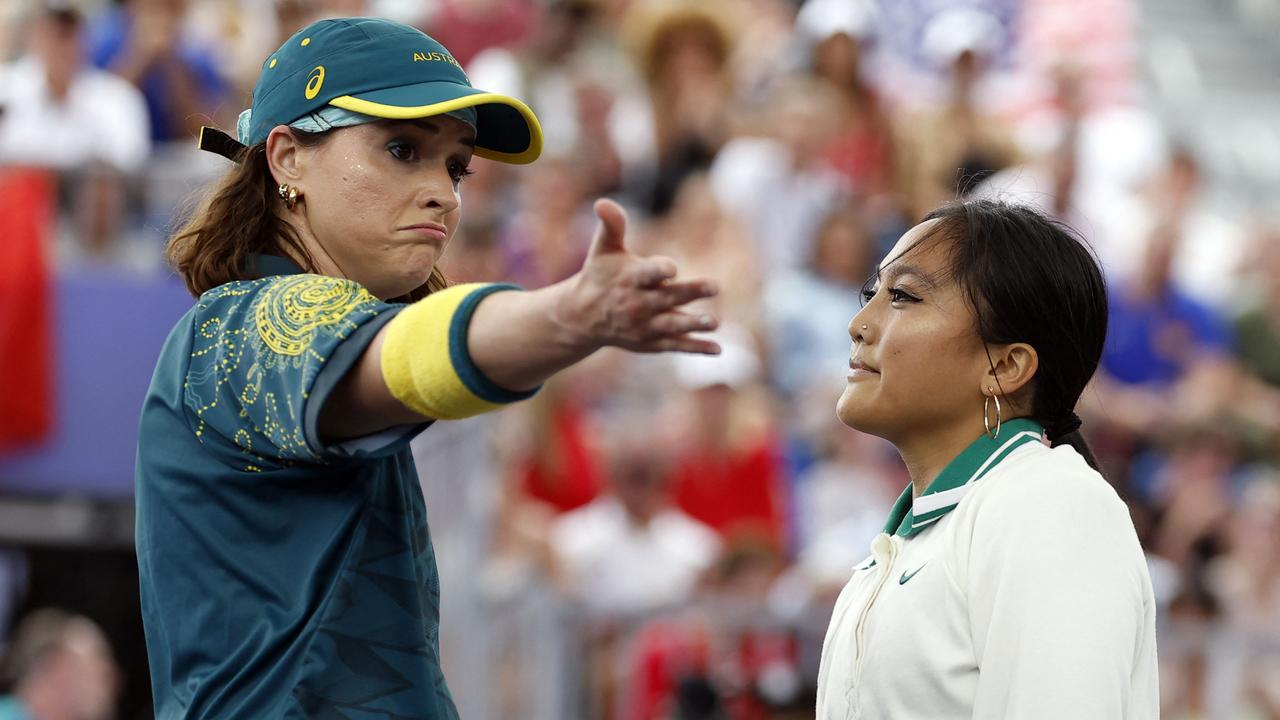
Olympics officials have been selling it by describing the sport as: “Breaking is an urban dance style that originated in the United States in the 1970s.
“With roots in hip-hop culture, breaking first took form in the lively block parties in the Bronx borough of New York, and is characterised by acrobatic movements, stylised footwork, and the key role played by the DJ and the MC (master of ceremonies) during battles.
“International competitions were first held in the 1990s, popularising the dance form both among hip-hop communities and the general public along the way.”
It’s the Olympics version of a 50-year-old Steve Buscemi going under cover at a high school in hit comedy 30 Rock and saying, “How do you do fellow kids?”.
So how does it really work?
Each athlete features in round robin battles before the tournament progresses to the quarter-finals, semi-finals and the medal battles.
Each contest involves three head-to-head battles that are scored by a panel of nine judges.
The performances are judged on six criteria: Creativity, personality, technique, variety, performativity and musicality. Performativity and creativity hold the most weight (60 per cent), and the other categories account for the other 40 per cent.
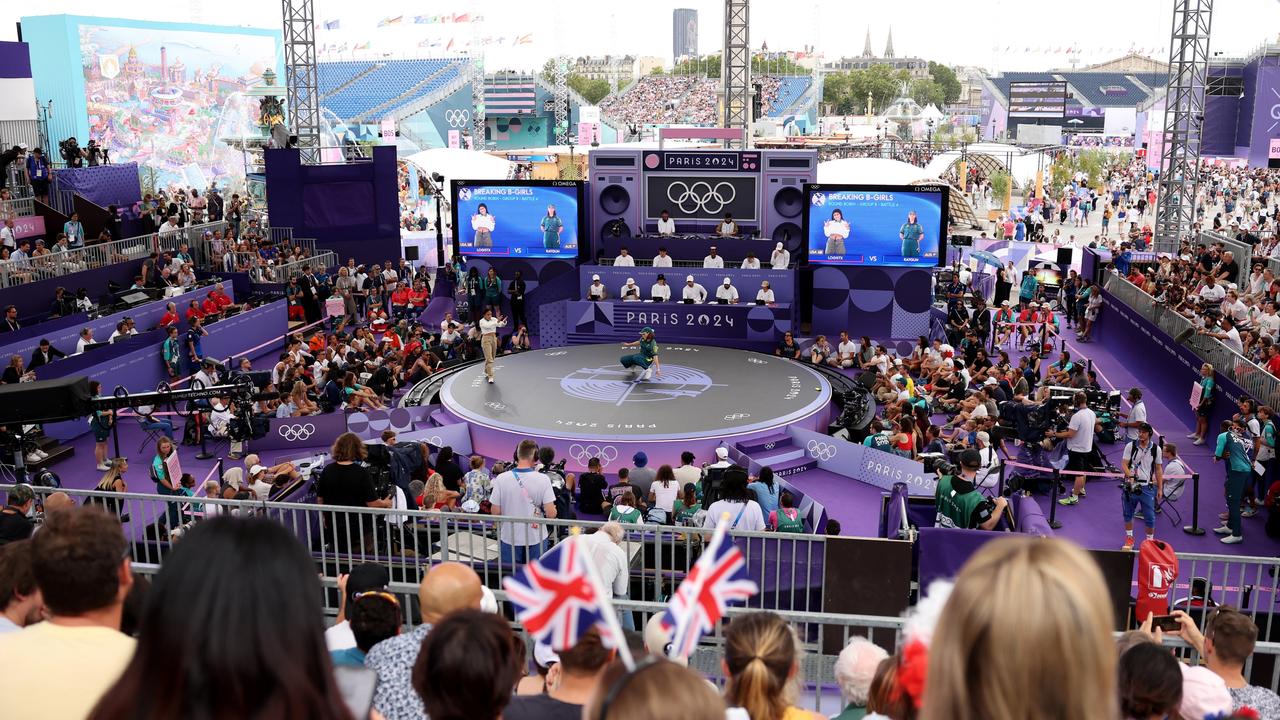
Unlike other Olympic dancing events, athletes are not told what music will be played by the DJ during their battles.
Breaking was introduced at the Youth Olympic Games in Buenos Aires, but this is the first time the sport will feature on the main Olympic stage.
Australia is being represented by Raygun and B-boy Jeff ‘J-Attack’ Dunne.
The Australian Olympic Committee announced in February 16-year-old Dunne and 36-year-old university lecturer Gunn had qualified for the event.
The first contest of the day was between India Sardjoe of the Netherlands, known by her B-girl name India, and Refugee Olympic Team competitor Talash.
Talash, whose real name is Manizha Talash, left Taliban-controlled Afghanistan to live in Spain two years ago and danced wearing a blue cape with “Free Afghan Women” printed on it.
More Coverage
Breaking is not the only new event taking place in Paris with sport climbing returning with a new format.
At the Paris Games the sport has been split into two events with men’s and women’s competitions in the speed event and the combined event.
Other changes included the introduction of a Kayak cross event where athletes raced head to head and Australia’s Noemi Fox won the gold.





